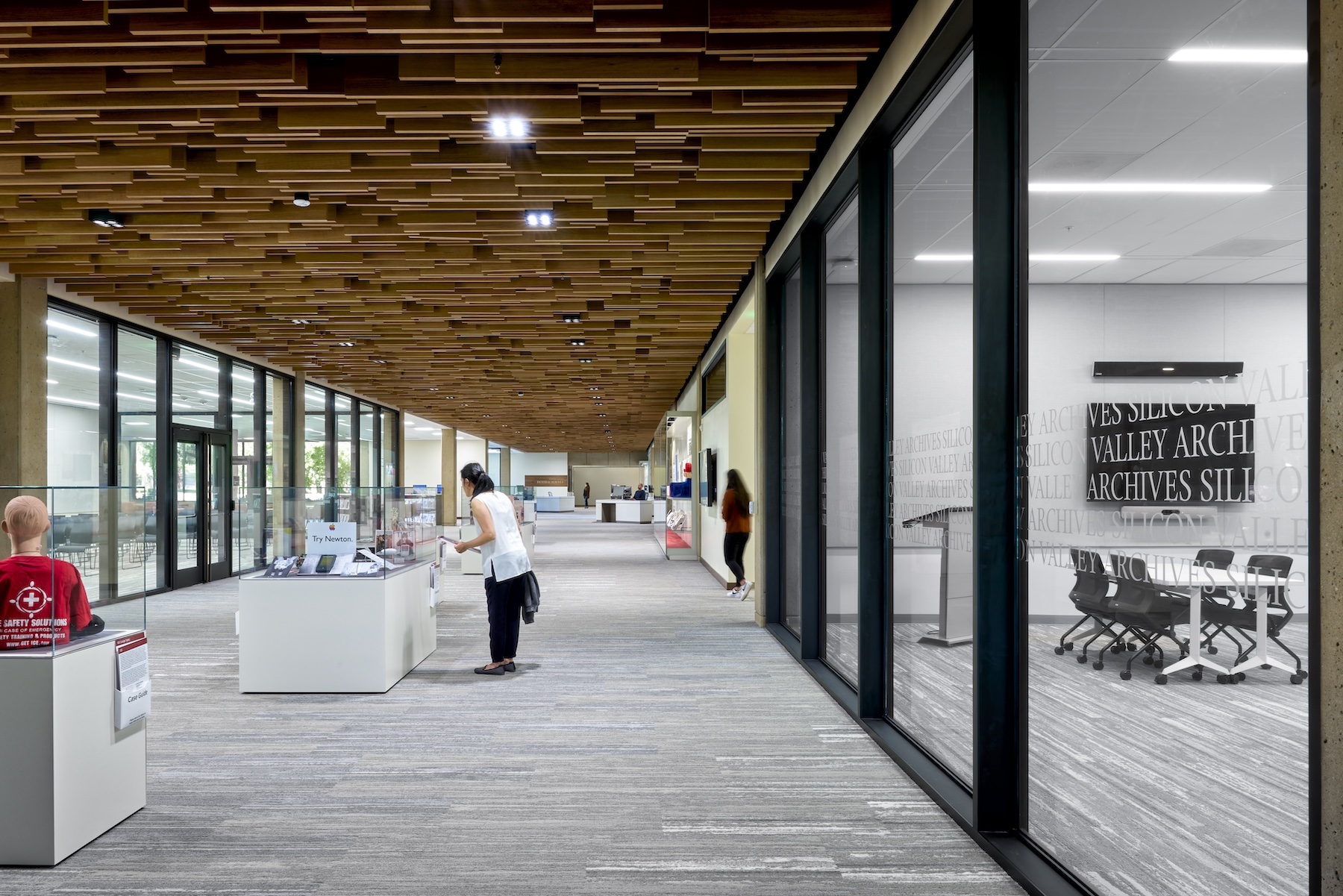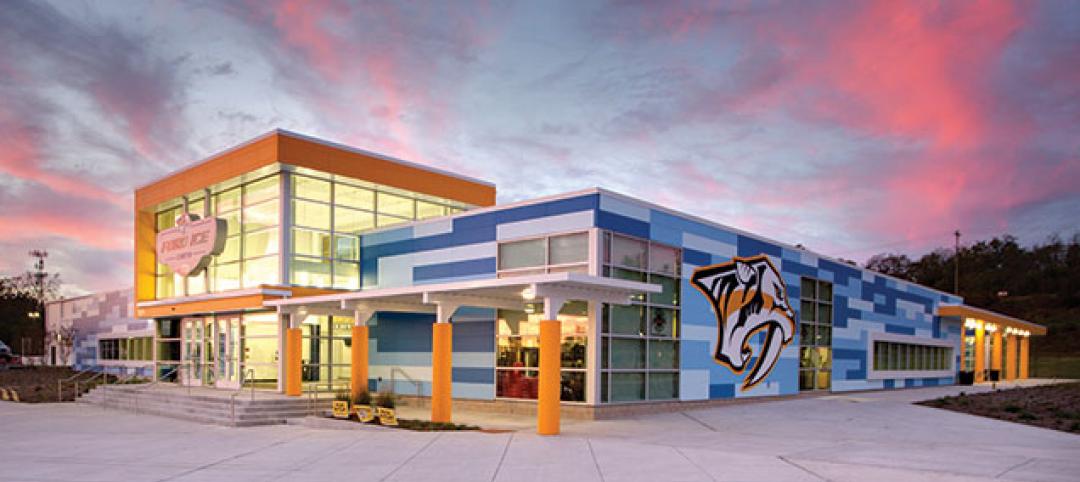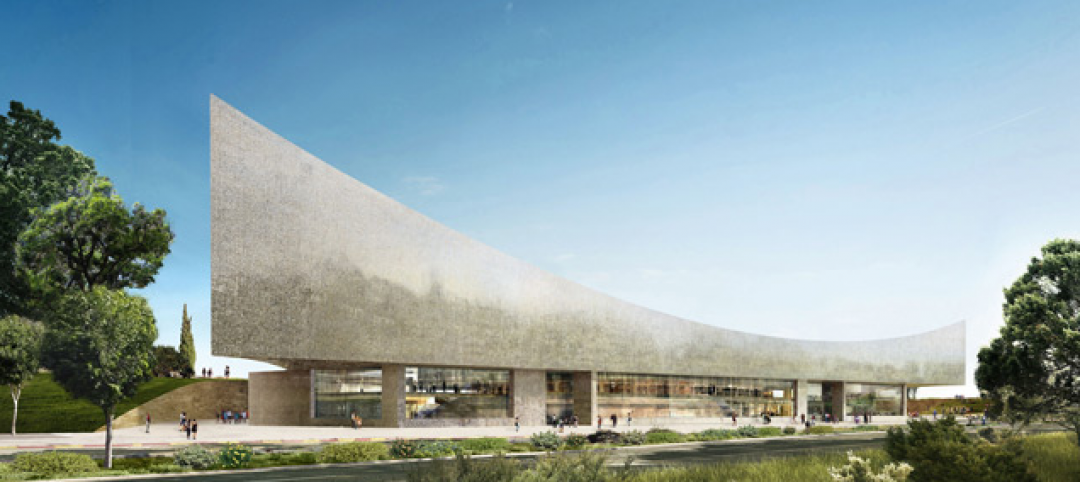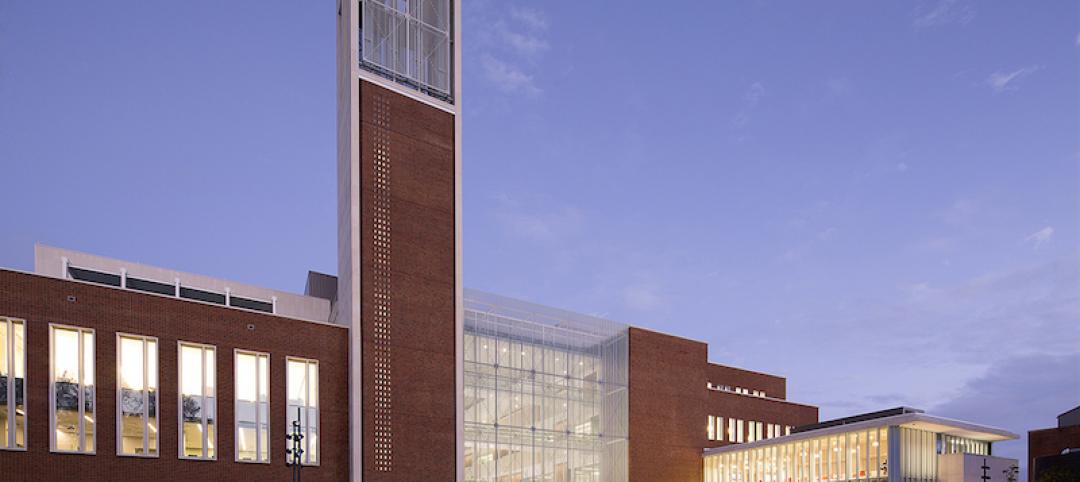The $7.7 million renovation of the first-floor East Wing of Stanford University’s Green Library reflects the library’s educational focus on technology.
CAW Architects designed the renovation of the 30,390-sf wing, which was completed in six months last December and reopened on January 3, 2022 as Hohbach Hall. The library stacks in the wing were converted into collaboration and study spaces, as well as presentation rooms and offices, thus transforming the nearly 50-year-old building into an exhibit space and learning hub.
An “oscillating” ceiling
According to Stanford, patrons engage this space in numerous ways.
The library’s gallery—which showcases the Silicon Valley Archives’ collection of the region’s pioneering technology—remains the wing’s centerpiece. Along the central corridor is a promenade of exhibition cases with a walnut ceiling overhead that now mimics the sine wave, a nod to the audio oscillator that was developed in this region. Cost-saving customized elements include a wood slat ceiling product that CAW finessed to create this pattern.
The reverse of the pattern is evident in the wing’s customized carpeting to insinuate silence.
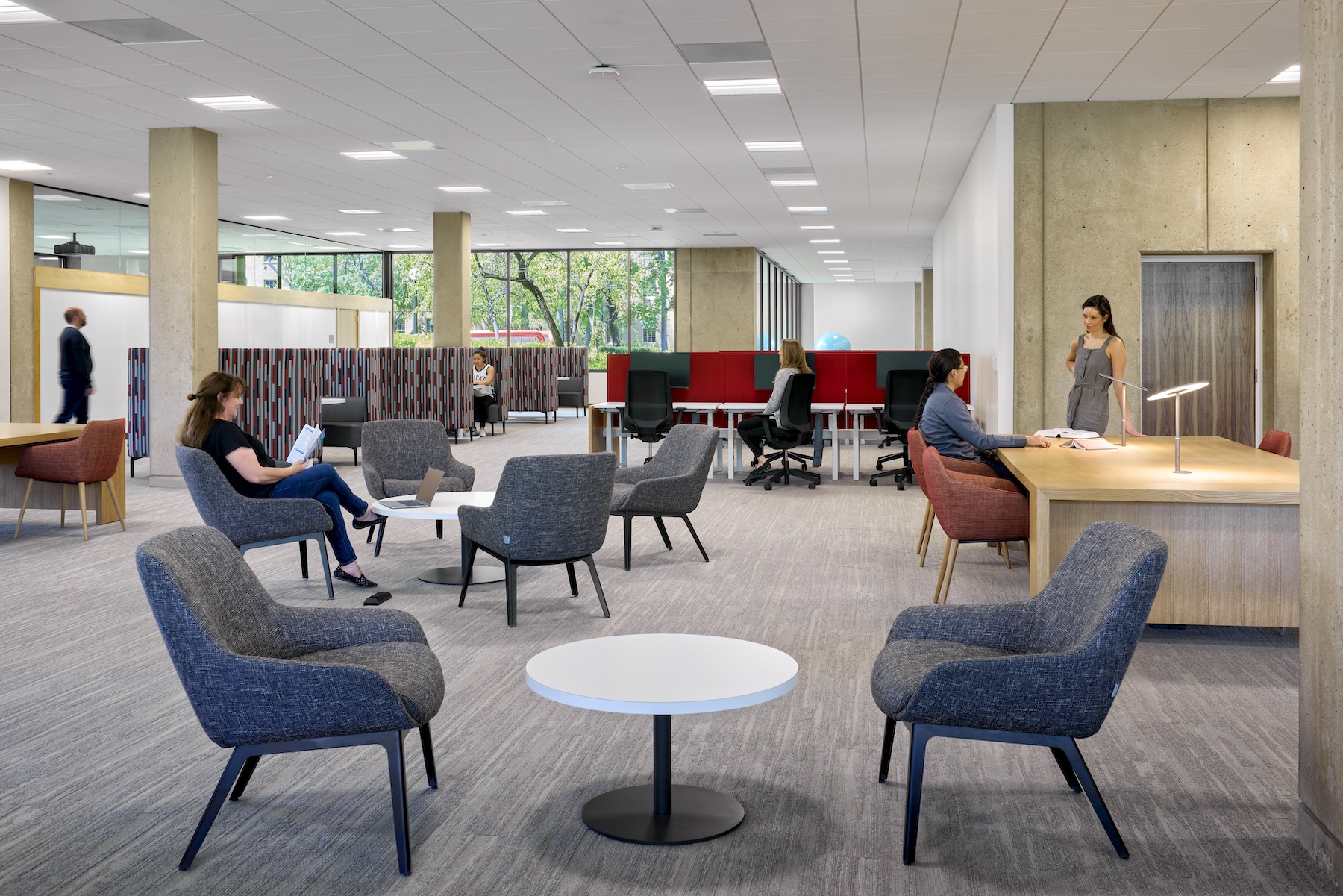
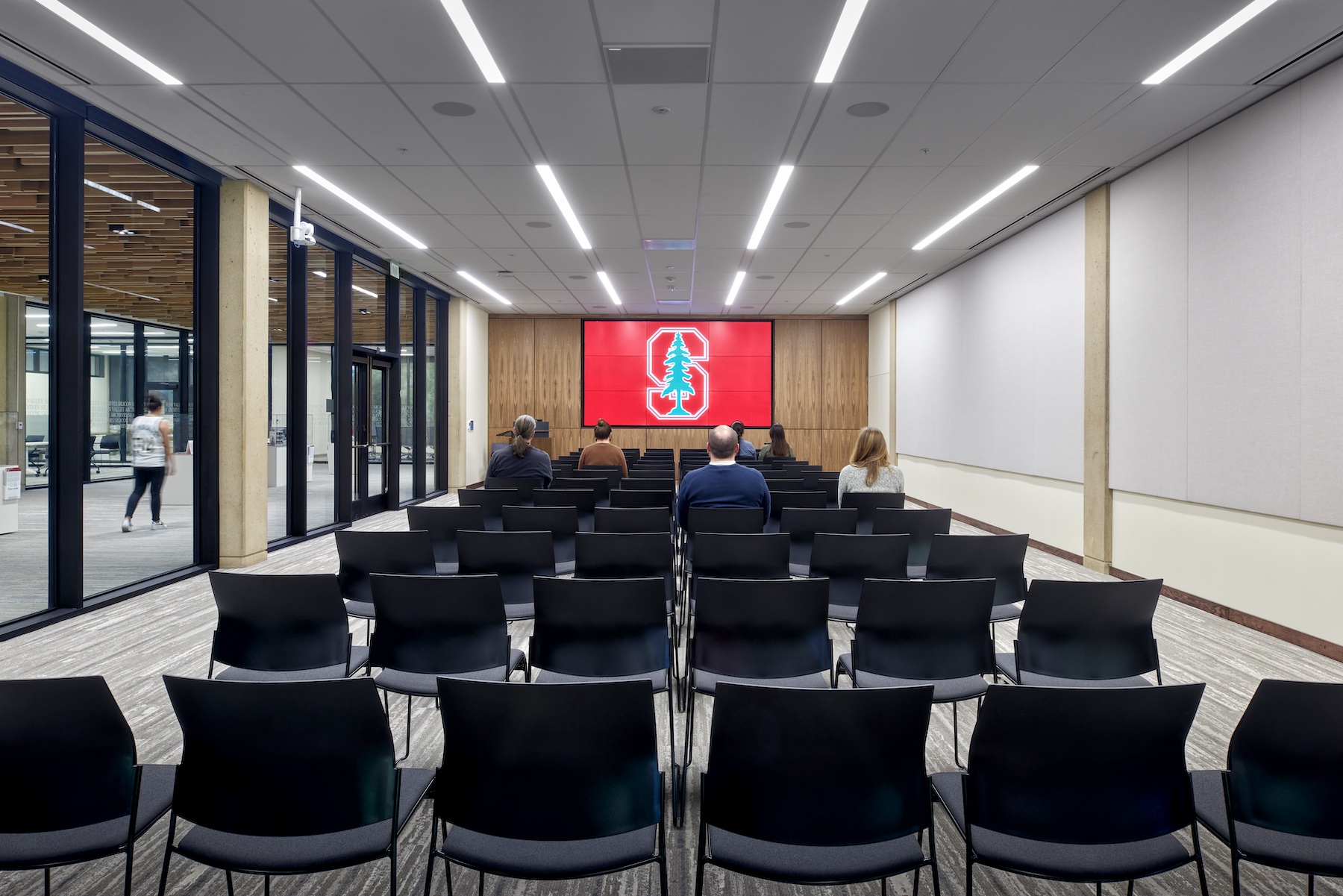 A presentation space at the center of the hall can be outfitted for events and seminars. That space also includes group and individual study desks, several of which look out onto the campus’s Red Fountain and green areas.
A presentation space at the center of the hall can be outfitted for events and seminars. That space also includes group and individual study desks, several of which look out onto the campus’s Red Fountain and green areas.
The project’s Building Team included Rinne Peterson Structural Engineers, Hilhouse Construction, the furniture consultant RMA Studio, and furniture vendor KBM-Hogue. The renovation was made possible by the Harold and Marilyn Hohbach Foundation.
Related Stories
Sponsored | Cladding and Facade Systems | Mar 24, 2015
Designers turn a struggling mall into a hub of learning and recreation
Architects help Nashville government transform a struggling mall into a new community space.
Retail Centers | Mar 10, 2015
Retrofit projects give dying malls new purpose
Approximately one-third of the country’s 1,200 enclosed malls are dead or dying. The good news is that a sizable portion of that building stock is being repurposed.
| Jan 2, 2015
Construction put in place enjoyed healthy gains in 2014
Construction consultant FMI foresees—with some caveats—continuing growth in the office, lodging, and manufacturing sectors. But funding uncertainties raise red flags in education and healthcare.
| Dec 29, 2014
Spherical reflectors help spread daylight throughout a college library in Portland, Ore. [BD+C's 2014 Great Solutions Report]
The 40,000-sf library is equipped with four “cones of light,” spherical reflectors made from extruded aluminum that distribute daylight from the library’s third floor to illuminate the second. The innovation was named a 2014 Great Solution by the editors of Building Design+Construction.
| Dec 28, 2014
AIA course: Enhancing interior comfort while improving overall building efficacy
Providing more comfortable conditions to building occupants has become a top priority in today’s interior designs. This course is worth 1.0 AIA LU/HSW.
| Nov 10, 2014
Herzog & De Meuron unveils plan for National Library of Israel
The library’s new home will be a completely new building in Jerusalem, and will combine the functions of a central research center, a venue for indoor and outdoor cultural and educational activities, and a place for digital experience.
| Oct 16, 2014
Report: How to keep public libraries relevant in a digital age
Public libraries will avoid being relegated to the scrap heap of history in a digital age as long as they continue to serve as platforms for learning, creativity, and innovation that strengthen their communities, according to a new Aspen Institute report.
| Oct 16, 2014
Perkins+Will white paper examines alternatives to flame retardant building materials
The white paper includes a list of 193 flame retardants, including 29 discovered in building and household products, 50 found in the indoor environment, and 33 in human blood, milk, and tissues.
| Oct 15, 2014
Harvard launches ‘design-centric’ center for green buildings and cities
The impetus behind Harvard's Center for Green Buildings and Cities is what the design school’s dean, Mohsen Mostafavi, describes as a “rapidly urbanizing global economy,” in which cities are building new structures “on a massive scale.”
| Oct 12, 2014
AIA 2030 commitment: Five years on, are we any closer to net-zero?
This year marks the fifth anniversary of the American Institute of Architects’ effort to have architecture firms voluntarily pledge net-zero energy design for all their buildings by 2030.


